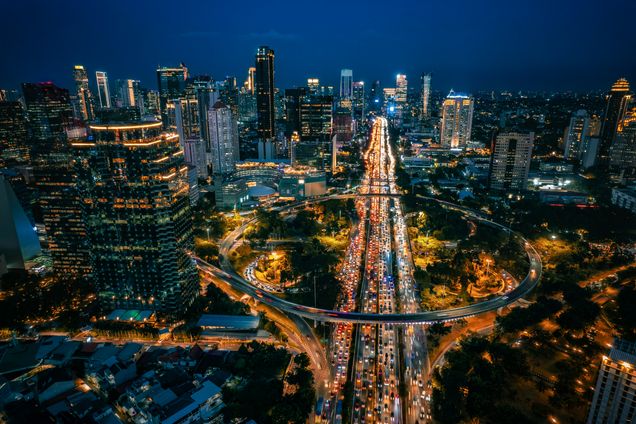A Roadmap for Unlocking the Potential of Multilateral Development Banks Exists – and the G20 Just Endorsed It

By Tim Hirschel-Burns and Rishikesh Ram Bhandary
A $4 trillion financing gap to achieve the United Nations Sustainable Development Goals (SDGs), 85 percent of which are off track. A need to rapidly scale up climate action and energy access. Weak global growth. Instability-fueled migration. A reversal in a decades-long trend of reducing global poverty.
The to-do list facing the international community is daunting, but there is a powerful tool that can steer investments where they are needed: multilateral development banks (MDBs). MDBs’ unique financial model allows them to act as a force multiplier in making up shortfalls in finance, as they can generate large amounts of finance relative to the capital shareholders put in—and provide finance at significantly lower interest rates than borrowing countries could access on their own.
Group of 20 (G20) leaders recently endorsed a clear roadmap on how MDBs should address climate and development challenges. This G20 Roadmap Towards Bigger, Better, and More Effective MDBs presents 13 recommendations to MDBs and their shareholders. That this collective action plan made it through the G20 – a notoriously difficult task – is a testament to the shared agreement of global leaders that MDBs need a more ambitious path forward.
Here’s what the Roadmap includes and what should happen next.
What does the G20 MDB Roadmap say?
G20 members hold the vast majority of shareholding power in MDBs, and the Roadmap builds on the G20’s earlier work on MDB reform, most notably the 2021 Independent Review of MDBs’ Capital Adequacy Frameworks, which set in motion reforms that have the potential to unlock $357 billion in additional lending headroom over the next decade, based almost entirely on MDBs’ existing resources.
This new Roadmap, however, goes even further. First, it makes clear that the evolution of MDBs is still in its early stages, and second, it takes a vital system-wide lens. This is meant to ensure that MDBs’ collective capacity is both at the appropriate scale to tackle global challenges and their operations harness synergies rather than create inefficiencies.
As the title suggests, the Roadmap outlines recommendations for bigger, better and more effective MDBs. The “better” pillar involves measures such as utilizing country platforms and improving project preparation to enable finance for national development plans. The Roadmap’s “more effective” pillar calls for incentives for MDBs to cooperate and a unified means of measuring MDBs’ impact.
Finally – and critically – the MDB system must be bigger. The Roadmap recognizes the important progress that MDBs have made to stretch their balance sheets, but it also asks MDBs to introduce resource needs reviews, in which MDBs undertake regular, evidence-based assessments of the adequacy of their resources in achieving shareholder objectives.
A new report from the Boston University Global Development Policy Center, which provided the empirical research informing the “bigger” pillar, finds that, even using lower-bound of lending needs by 2030, the MDB system will need to increase lending by at least three times.
However, the size of that capital ranges significantly—from $60 to $572 billion—depending on how ambitiously MDBs implement capital adequacy reforms, the extent of hybrid capital use and global interest rates. While the prospect of MDB capital increases may seem unlikely following the US election, it is worth remembering that the last capital increase for the World Bank’s non-concessional and private lending arms came in 2018, with President Trump in office. The MDBs’ new capital needs also amount to just fractions of one percent of governments’ annual budgets.
What happens next?
The onus is now on MDBs and their shareholders to rise to the challenge. MDBs have already shown a willingness to reform through positive steps like the World Bank’s Evolution Roadmap, launched two years ago. In the World Bank’s case, its shareholding review scheduled for 2025 provides an immediate opportunity to consider the adequacy of its resources.
As South Africa takes over the G20 presidency in early December, it should show leadership on turning these recommendations into a reality, with the critical first step of setting a precedent that the G20 will meaningfully track progress on the Roadmap’s recommendations and actions. South Africa should put particular emphasis on defining principles for MDBs’ resource needs reviews and pushing all MDBs to actually initiate these reviews. These principles will help the global community track whether MDBs as a system are delivering or not.
The costs of the status quo—underinvestment in economic potential, future damages that could have been avoided, wasted human capabilities—are unacceptable. The G20’s MDB Roadmap provides a path for MDBs to do their part to achieve a brighter alternative, but its recommendations won’t be carried out on their own. As important as the G20’s endorsement of the Roadmap is, for it to be a success, this endorsement can’t be the end of the road.
*
Never miss an update: Subscribe to the Global Economic Governance Initiative newsletter.